I am contacted by many people each year asking for help to identify snakes they find in their yard. Many are just curious as to what animals call their yard home, or what they saw while camping. I would be lying if I didn't mention that most just really want to know if they are in danger and often adopt the approach of "shovel first, questions later". Is it "poisonous" or venomous is more often than not top of the list of questions they ask. My hope is that this will address some of those questions and help provide a place for others to ask their questions and contact me more easily if needed.
If you don't care if it is venomous, still feel free to leave comments or contact me as directed below. You may look at the pictures under the
Reptiles tab to try and figure out what snake you have seen.
Ohio Venomous Snakes
Ohio has three species of venomous snake. That is three species out of the twenty five snake species that call Ohio home. They are the eastern massasauga rattlesnake (
Sistrurus catenatus), the northern copperhead (
Agkistrodon contortix) and the timber rattlesnake (
Crotalus horridus). Unfortunately, due to habitat loss, road mortality and persecution, both the timber rattlesnake and massasauaga rattlesnake are listed as state endangered species and can only be found in very specific locations in the state. It is highly unlikely that most Ohioans will ever encounter these animals.
Here are some general rules for identification when you are looking at a snake in front of you. These rules only apply to Ohio and snakes that can be found in the wild.
1. Vertical pupil vs round pupil - All of Ohio's venomous snakes have vertical, cat-like, pupils. Ohio's nonvenomous snakes do not. Again, outside of Ohio, there are snakes that do not follow these rules. Here are pictures of all three of Ohio's venomous snakes that clearly depict the vertical pupil.
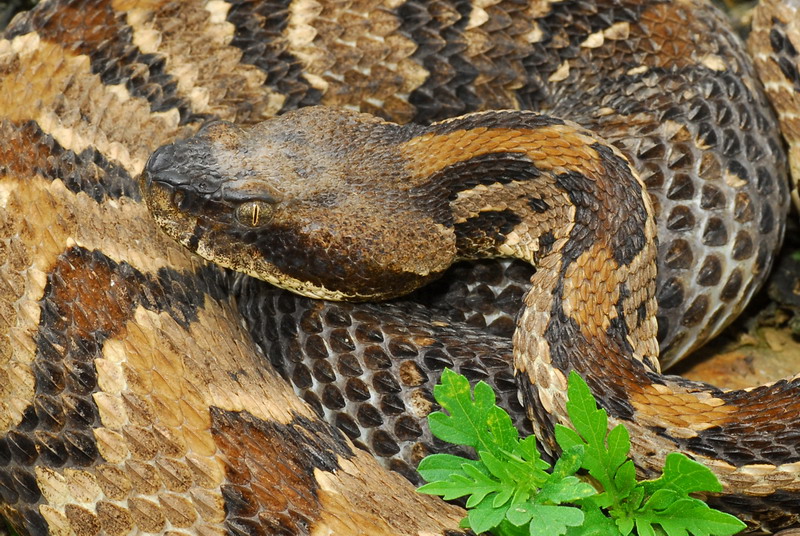 |
| Timber Rattlesnake |
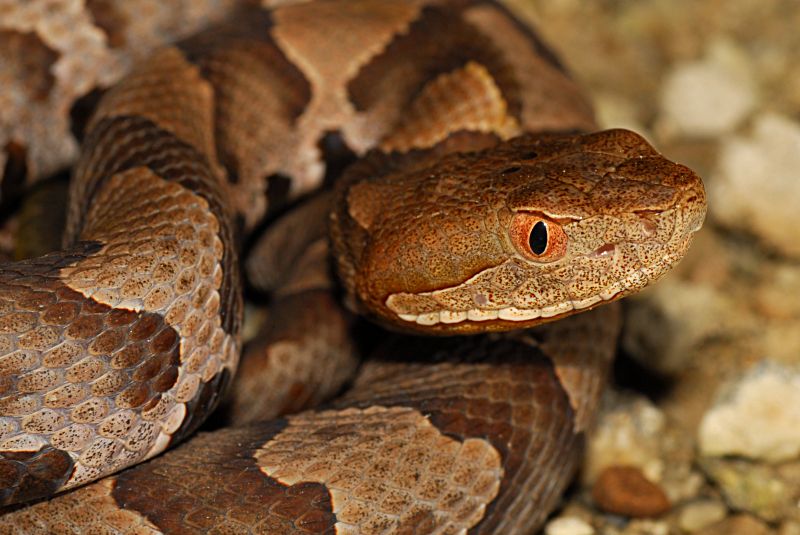 |
| Copperhead |
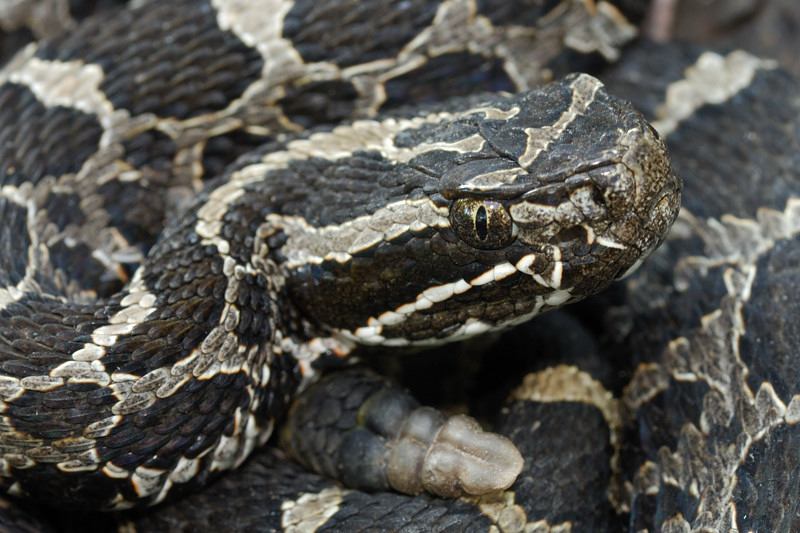 |
| Massasauga Rattlesnake |
And a nonvenomous snake, the eastern milksnake. This snake is commonly confused for a copperhead or massasauga rattlesnake.
2. Presence of a facial pit - All of Ohio's venomous snakes are pitvipers. They have a heat-seeking pit that helps them localize their prey. The are ambush predators, and will sit and wait for a small rodent to run by, sometimes at night, and their pits help them hunt. Ohio's nonvenomous snakes do not have these heat-seeking pits.
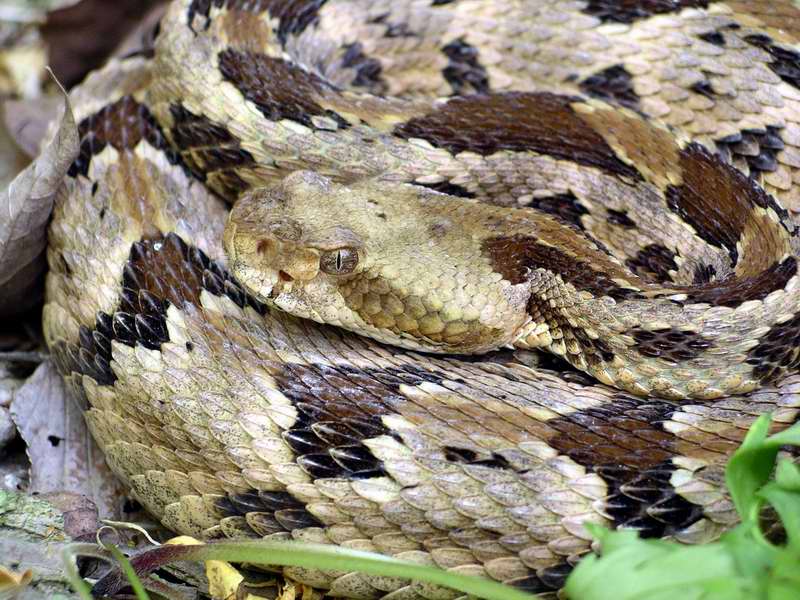 |
| Timber Rattlesnake - pit is easily visible to the left and below the eye, just like in the above drawing. |
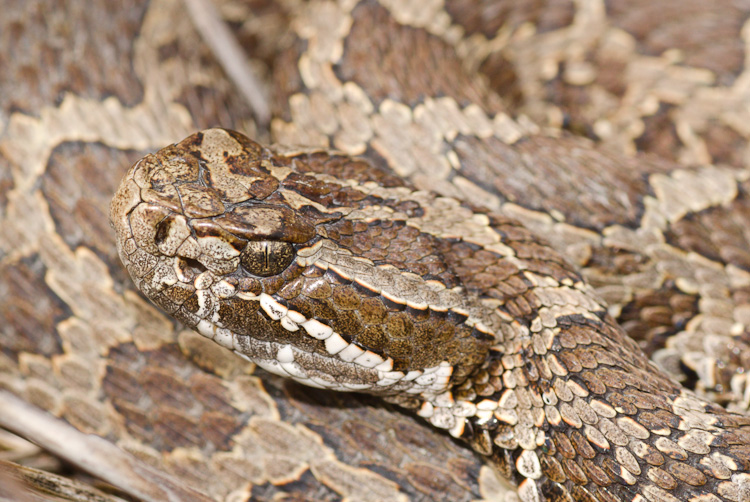 |
| Massasauga Rattlesnake |
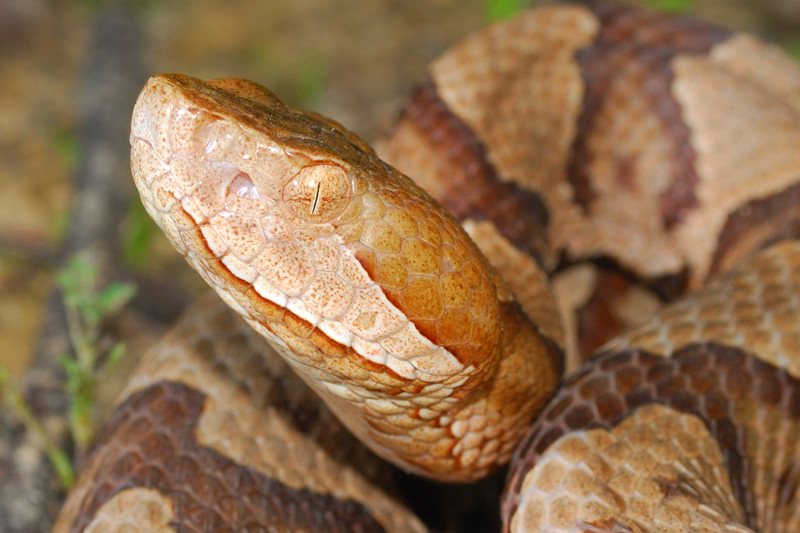 |
| Copperhead | | |
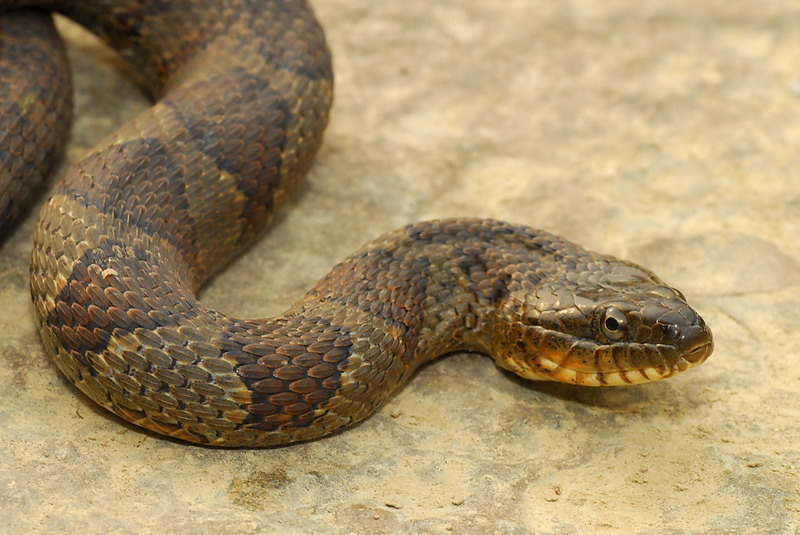 |
| Northern Watersnake, nonvenomous - note the lack of a vertical pupil or pit. These are often confused for copperheads. | |
|
3. Divided anal plate and double tail ventral scales after the cloaca vs single anal plate and tail ventral scales after the cloaca. In normal terms, the nonvenomous snakes have a split or divided scale that covers their cloaca. The cloaca is the opening (butt) of the snake where feces (poop) is excreted. The scales after the anal scale will also be divided or doubled. Venomous snakes of Ohio have a single anal scale and single scales after. I will obtain pictures of anal scales soon, but please refer to the above figure.
4. Presence of rattle - Two of Ohio's three venomous snakes are rattlesnakes and have a rattle that produces a loud noise. I will be sure to record one soon as well for you to listen to. This is not as easy as it seems, as most other nonvenomous snakes will rattle their tails in leaves to mimic the rattling sound. Also, their copperhead will also rattle it's tail, although it does not have a rattle. Finally, young rattlesnakes just have one segment of rattle, or a button, and their tails will not make noise. If you see a rattle, or hear a rattle, it is best to just walk away.
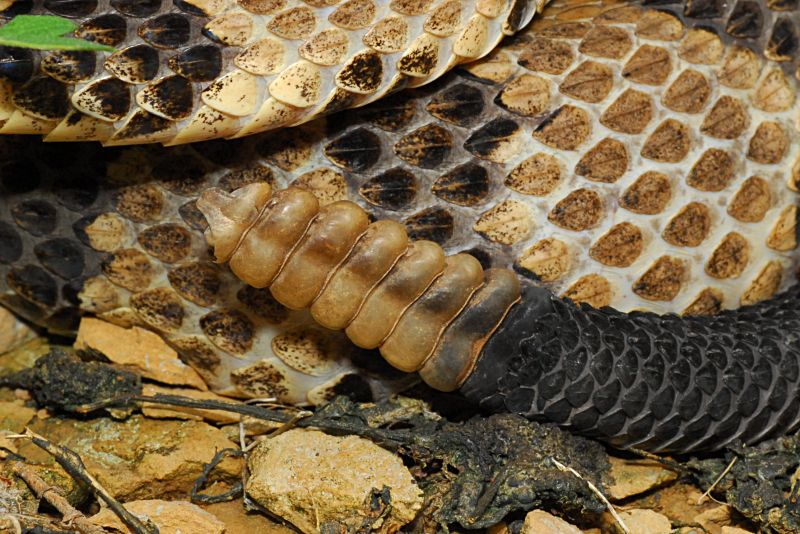 |
| Timber Rattlesnake rattle |
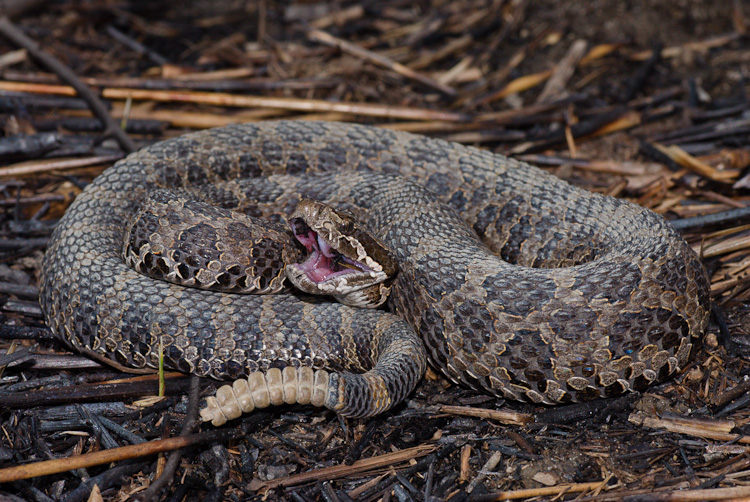 |
| Massasauga Rattlesnake, with large rattle, saying "Stay Away" |
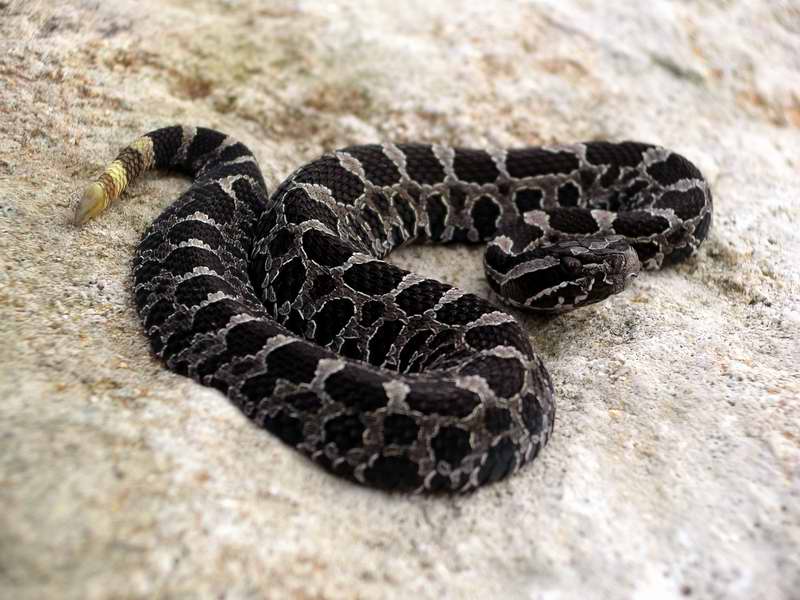 |
| Massasauga Rattlesnake, neonate or baby, with single button |
5. Triangular head vs Rounded head - It is true venomous snakes often will have a triangular head. Many nonvenomous snakes will flatten their neck and change their shape slightly to look more triangular.
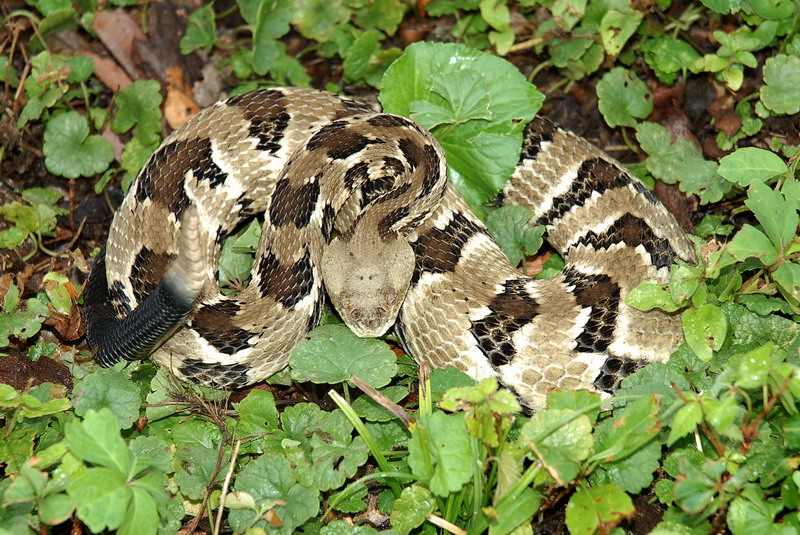 |
| Timber Rattlesnake - displaying the triangular head shape |
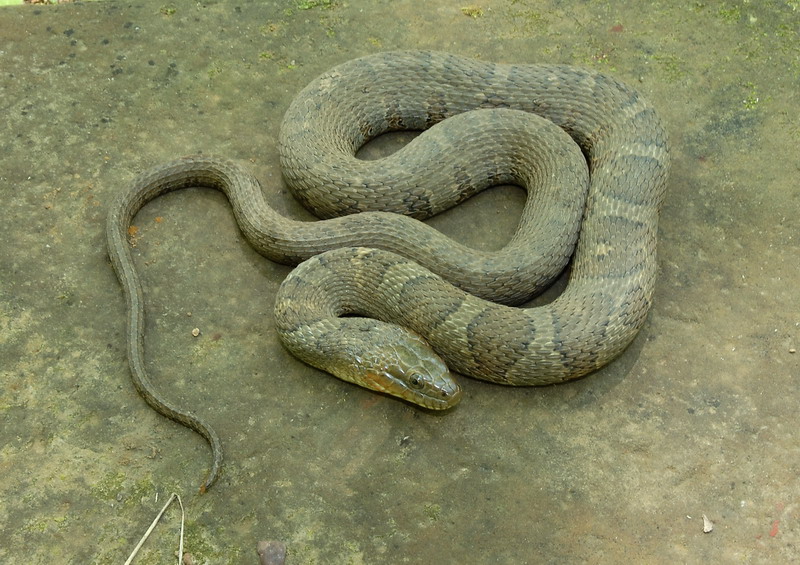 |
| Northern Watersnake with a fairly triangular head |
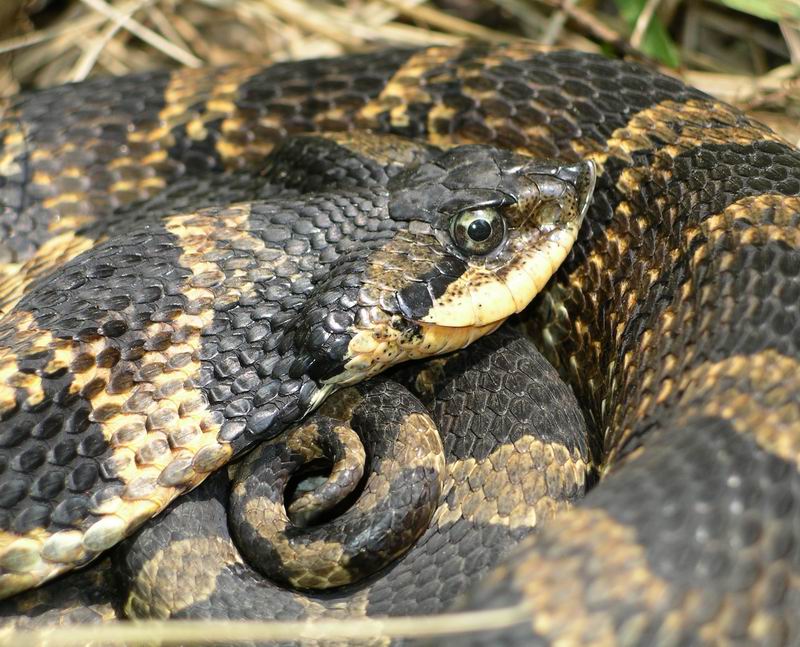 |
| Eastern Hognose Snake showing a triangular head |
Remember, most of these snakes have specific habitat preferences and
needs. They are not found all over the state. Just because a snake
lives in Ohio, does not mean it lives in your area as well. If you draw a line from Cincinnati to Cleveland, a very general rule is that Massasauga Rattlesnakes occur sporadically in the NW half of the state, while Timber Rattlesnakes and Copperheads occur only in the rocky, hilly region in the SE half of the state.
Now, you are probably reading this and saying "BuckeyeHerper, you are crazy if I am ever going to be close enough to a snake to look it in the eye, or lift it's tail to check the butt." I agree completely, but I do not feel this is a reason to kill the snake. If you aren't sure, just keep a safe distance and leave the snake alone. Luckily snakes are not as aggressive as people typically think they are. They will run more often than not. If they do happen to stand their ground, you can very easily walk away or around them without any worry. If you are comfortable, everyone has a digital camera or cell phone these days, and it is easy to take a quick picture from a safe distance. You can then compare your picture with pictures on this and other websites, or email it to me or others for assistance.
Again, if you aren't sure, just keep your distance. These snakes are very rarely encountered, and chances are you have just found one of the more common nonvenomous snakes. Despite what you might have heard, Ohio also does not have any cottonmouth, or water moccasins. The closest populations are hundreds of miles away.
If you have any further questions, or want to share pictures or stories, please feel free to leave a comment below or email me at foltjr AT gmail.com .
















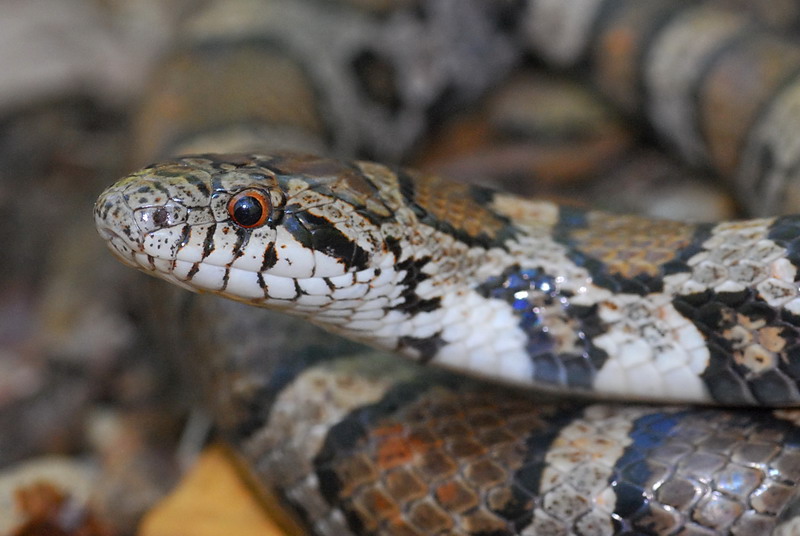

This comment has been removed by a blog administrator.
ReplyDeleteIn paragraph 3 you have the description backwards. Non-venomous snakes have the split scales, venomous snakes have single scales behind the cloaca.
ReplyDeleteRead the whole paragraph. It is correct.
DeleteThanks, I can't believe I didn't catch that earlier.
ReplyDeleteWhatever the case is today, 40 years ago ther were some Timber Rattlers in Morrow county.
ReplyDeletethat was helpful thanks! my son was bitten by a snake and i'm happy to be more informed now.
ReplyDeleteThank you very much for the site and all of the pictures to compare. Well done!
ReplyDeleteThis page is pretty cool I just have one question I've heard more than once that black snakes or water snakes are cross breading (I know better) but am afraid that this might confuse the less intelligent and cause them to kill every snake they see and that pi**s me off
ReplyDeleteSo is water snakes are poisonous watermark because I have one that I cut
ReplyDeleteIt should be told that both of the hognose snake species are a rear fanged venomous snake. The venom glands are very small. Herplover.
ReplyDeleteTrowsley@gmail.com
only venomous to frogs and toads
DeleteI found a snake in my creek yesterday and I know its not venomous but I am not sure as to what kind of snake it is.... Got some pics of it do you think you could take a look and name it for me?
ReplyDeleteI have seen a massasauga twice now in my yard. I knew the markings were different than most of the gardener snakes I normally see. I had to change out a pump in my septic tank and upon removing the lid I had three gardener snakes and one massasauga along the rim. I know they say to leave them alone but I will be relocating mine since I am now confident of what the snake is. Greene county just south of Xenia.
ReplyDeleteYou should report this to the Ohio division of wildlife. A picture would be helpful if possible.
DeleteMany people mistake a milk snake for a copperhead. The milk snake has a distinct "checkerboard" pattern on the belly. It's a very easy way to be sure it's a harmless milk snake.
ReplyDeleteI once saw a orange, black, covered kinda a fox patterned snake in portage county Ohio. Can't find anything online please help.
ReplyDeleteHard to tell from the description but possibly a hognose snake?
DeleteI thought I seen a baby copperhead. But I'm not sure. Was a light color almost white. It was under a brick near my fire pit.
ReplyDeleteThis comment has been removed by a blog administrator.
DeleteHey mate I am a nature photographer and herper from NSW Australia, I will be in southern Ontario next year and would love to drive down to Ohio to see if I can snap some pics of a copperhead in the wild. Can you suggest any hot spots where I may be likely to come across one?
ReplyDeleteCome to columbiana Ohio email me @ jimmyadams608@gmail.com I will show you a great spot for them mainly beaver creek and the woods by my house
DeleteHeavily Wooded areas in Meigs and Athens county Ohio are great for copperheads.
DeleteI am in wooded areas and snake habitat frequently but don't often encounter them. Actually, my home is in a wooded area. When I do encounter snakes, I kill them (with the exception of garter snakes) regardless of what they are or what they are doing.
ReplyDeletePlease don't. They are probably doing you a huge favor eating moles, chipmunks, and other destructive rodents.
DeleteYea. Snakes, venomous or non-venomous are good to have around the house as long as you are careful to not provoke the snake. Same goes with bats eating mosquitoes and other annoying insects. I mean if you have a cat for example he/she might or might not kill the mice. If you have snakes on the other hand they will kill just about every mouse there is.
DeleteOkay--this is very confusing. Every article I've read tells us there are NO Water Moccasins native to Ohio--yet!--we just killed one swimming in our pond! We live near Allentown, Ohio. My grandson saw it swimming near the shore and flipped it out of the water and covered it with a towel. (30-36" long and fat.) It bit into the towel and we could see its fangs and white mouth. It had a distinct TRIANGULAR head; OVAL eyes. After reading the above article I inspected the dead snake and it had a SINGLE ROW of belly scales near the tail! The snake met all three identifications for a Water Moccasin!; TRIANGULAR HEAD, OVAL EYES and a SINGLE ROW of scales near at the tail! QUESTION: ARE or ARE THERE NOT Water Moccasins in the wild in Ohio!!!! We know there are Northern Water snakes of which there are numerous around the pond--we let them live. (Narrow heads, black and tan--but they are ANGULAR patterned--the WM had STRAIGHT bands with the black being wider and the tan narrower.)
ReplyDeleteAn ODNR resource officer captured a water moccasin in the creek out back of my house just last summer. After this, I disagree with anyone who tells me we do not have water moccasins in Ohio. I live inn Belmont County.
DeleteThere are not water moccasins in Ohio. At all. No chance. You did not have one in your pool. They have elliptical/vertical pupils and a heat seeking pit near the nostril. They are not oval.
ReplyDeleteMany venomous and nonvenomous snakes can have a triangular head. This is not a good characteristic.
Banding really has nothing to do with identifying these two species. Water snakes in particular have very variable pattern.
Ohio has three venomous snake species but does not have water moccasins/cottonmouth.
I do not recommend killing snakes for identifying them as people may be bitten doing so. Pictures from a safe distance are best.
This comment has been removed by a blog administrator.
DeleteThis comment has been removed by a blog administrator.
DeleteThis comment has been removed by a blog administrator.
DeleteAgain, I can promise you there are no water moccasins native to Ohio. They are not in any part of Ohio and the closest population is hundreds of miles away.
DeleteThis comment has been removed by a blog administrator.
ReplyDeleteThis comment has been removed by a blog administrator.
ReplyDeleteThis comment has been removed by a blog administrator.
ReplyDeleteHello-
ReplyDeleteI might like to use the 2nd picture (copperhead) in our state gov. newsletter. Would that be ok? If so, how would you like the photo to be labeled (photographer or website, etc.).
Thanks
Brian
Thank you for this helpful site! I thought I saw a copperhead in my driveway, but from this site I learned it is a milk snake. I'm glad it appeared today and I appreciate snakes a little more now because of this experience and the subsequent learning. Cheers. CNL
ReplyDeletedoes the red milk snake mimic a rattle snake like a red rat or corn snake?
ReplyDeleteThis comment has been removed by the author.
DeleteThey can and will rattle their tails sometimes. I have seen milk snakes, racers, and rat snakes all do this.
Deletedoes the red milk snake mimic a rattle snake like a red rat or corn snake?
ReplyDeleteComing from Texas I've learned much about snakes. My daughter and I discovered a baby snake, under a rock. It was about the size of a fishing worm, black with a circle around the neck which was red and some other color. I've not seen one like that before and wondered if you could help. I do know that baby snakes often look much differently than when they are larger. I will appreciate any info you may provide. Thank you.
ReplyDeleteSounds like a Northern ringneck. They are a small species, only reaching 10 to 15 inches.
DeleteLived in southwestern Ohio all my life. My daughter and I have encountered a type of snake in two different locations in the last 2 weeks. I am trying to identify it. It is long (easily 4 to 5 feet) but not big around like a black snake. My daughter describes it as looking as if it is 'folded' because it has a bumpy body shape. It does not seem round. We tried to get it to move off the road and it got upset and became more round. None of the pictures seem like it.
ReplyDeleteblack rat snakes will kink up their body and appear folded, especially when crossing roads. that seems to be the most likely candidate.
DeleteSo will black racers (Coluber constrictor), and they're thinner than rat snakes.
DeleteRacers have smooth scales, and are patternless. Rat snakes have mildly keeled scales, with pattern evident between the scales. Both will usually bite readily, if handled.
Deletehttps://scontent-lax3-1.xx.fbcdn.net/v/t1.0-9/13600261_10206815475085481_6427286556016309924_n.jpg?oh=b508fcaca3fed0ca4917e88f64706aea&oe=57EB3ADF picture of snake in my sisters yard we removed it to the woods. She lives in Lucas county South of Swanton. tried to get better picture but no head shot and kept rolling over exposing orange-yellow belly.
ReplyDeleteDid make noise like sizzling water when my dog first approach it picture i on facebook.
DeleteThat is an eastern hognose snake. They will hiss loudly, rattle their tails, spread their neck out and sometimes fake strike. As a last resort they will roll onto their backs, and play dead with their tongue hanging out of their mouth. Really neat defensive behavior for sure!
DeleteThis comment has been removed by a blog administrator.
ReplyDeletewhat snakes do you often find cincinnati
ReplyDeleteThis comment has been removed by the author.
DeleteI was never lucky enough to find one in Cincinnati, but always heard reports from that general area. I don’t know if you are able to edit your post, but it might be a good idea to just say OTR and leave out the streets publically. I do have some other questions about this if you are willing to email me - foltjr at gmail.
DeleteThanks!
You made a good point.... Even if it was 30 yrs ago.... REVISED.
Delete"You can find Kirklands snakes in a small area in the OTR area".
This comment has been removed by a blog administrator.
ReplyDeleteThis comment has been removed by a blog administrator.
ReplyDeleteBruce,
ReplyDeleteFeel free to send them over! Foltjr@gmail.com
Thanks!
This comment has been removed by a blog administrator.
ReplyDeleteIs there a listing of local hospitals in S.E. Ohio that carry anti-venom?
ReplyDeleteNot one that is widely available. The major academic centers should all have access to crofab, and if not they will transfer you to one that does. The smaller hospitals may have enough to get treatment started. Any physician can contact and consult with a toxicologist through the poison control center to ensure appropriate management. 1-800-222-1222
ReplyDeleteDo you think you could tell me about Eastern Gartner snakes? Id so thanks if not I understand
ReplyDeleteWhat do you want to know?
DeleteEastern Garter snake. (Thamnophis sirtalis sirtalis)
DeleteI was driving through killdeer plains in Wyandot county, I saw a snake on the road probably 16" it was brown with dark diamond shapes all the way down it body. It coiled and struck at me, I spend a lot of time in the outdoors and this was a new one....any ideas?
ReplyDeleteCould have been a northern watersnake or a massasauga.
DeleteBack in the early '80's, there used to be a small den of A.contortrix mokeson in southern Clermont County, around 2 miles north of Laurel Ohio. They tended to stay in the dell, just below the den sight (southern exposure rock outcropping, with deep fissures), near the creek there. I believe I'm about the only one who knew they were there, as this is (was) a pretty rural area. I grew up there, and discovered them while looking for ring neck snakes
ReplyDeleteReally interesting historical report! It’s crazy to think that was 30 years ago...
DeleteThis comment has been removed by the author.
DeleteI don't think those Coppers are there any more. Shame. I used to go there late April, early May, and watch them sun themselves. They were only a half mile from my house, and never came up the hill to our property. I have seen them out sunning as early as mid February, after a mild winter.
DeleteIt's funny what changes. I now live in South-central Texas, where the most common snakes in order are, the Western Diamondback Rattlesnake(Crotalus atrox) Texas Coral snake (Micrurus Tenere) Plain-bellied water snakes (Nerodia erythrogaster), Texas (Eastern) Rat snake (Elaphe(pantherophis)obsoleta). I'm not convinced North American rat snakes, and corn snakes should be listed as "Pantherophis", and several others.
ReplyDeleteClermont County Ohio, where I grew up, had a very high concentration of snakes. Indeed! The neighbor girl and I went on a snake hunt on a Sunday afternoon, and came back with four, black rat snakes, all four were 6'+, and one was an eight footer. we turned them back where we found them, then found a couple of Hoggies ten minutes later. It's one of the "snakiest" places I've ever seen. I hope it's still the same.
There are lots of melanistic Hoggies here too!
DeleteThanks for this great info. I saw a snake and this page helped me identify it as a milksnake. If interested a pic of it is here (lower right in image):
ReplyDeletehttps://www.flickr.com/photos/148997126@N03/37852202872/
Hey Vince!
DeleteYour snake is actually a very young black ratsnake. Great photography!
Thank you for this most interesting and well documented site! Photos and info are fantastic!!
ReplyDeleteIf anyone has ever seen a copperhead in Hamilton County, OH, where exactly? I think I saw one in Harrison near Indiana last summer. I didn't think you would find them here.
ReplyDeleteThank you for your blog. This page about distinguishing venomous snakes of Ohio from non-venomous ones is outstanding. It is very helpful in adding to our homeschooling curriculum for my 6th-grade daughter. We both learned from your article and photos. My daughter says, Now we will know how to tell if a snake is venomous or not!
ReplyDeleteCan you assist me with the identification of 2 snakes. The one was in my kitchen and have no idea how it got there and looks like a baby and I am afraid mom is still in my house.Kyle still there?
ReplyDeleteSure. You can email me at foltjr AT Gmail.com
Delete